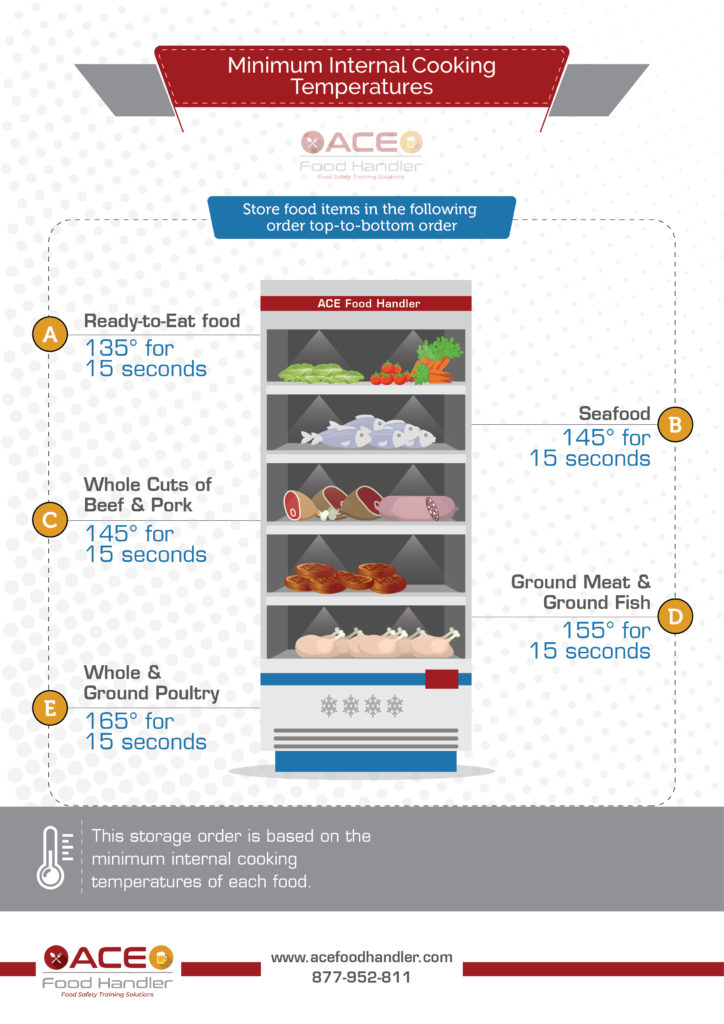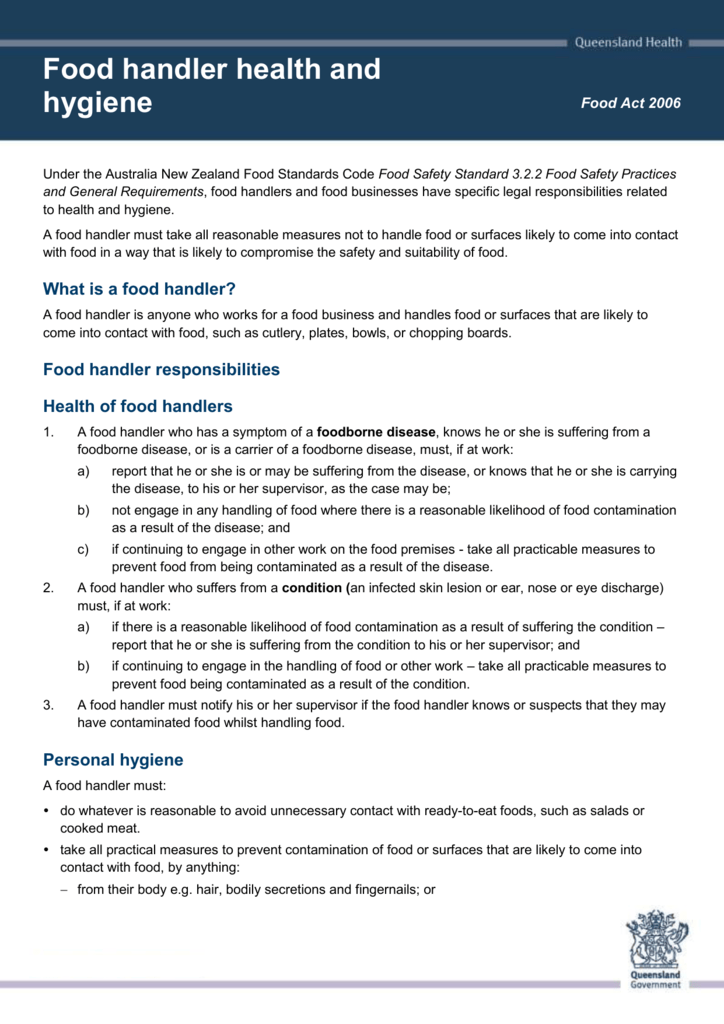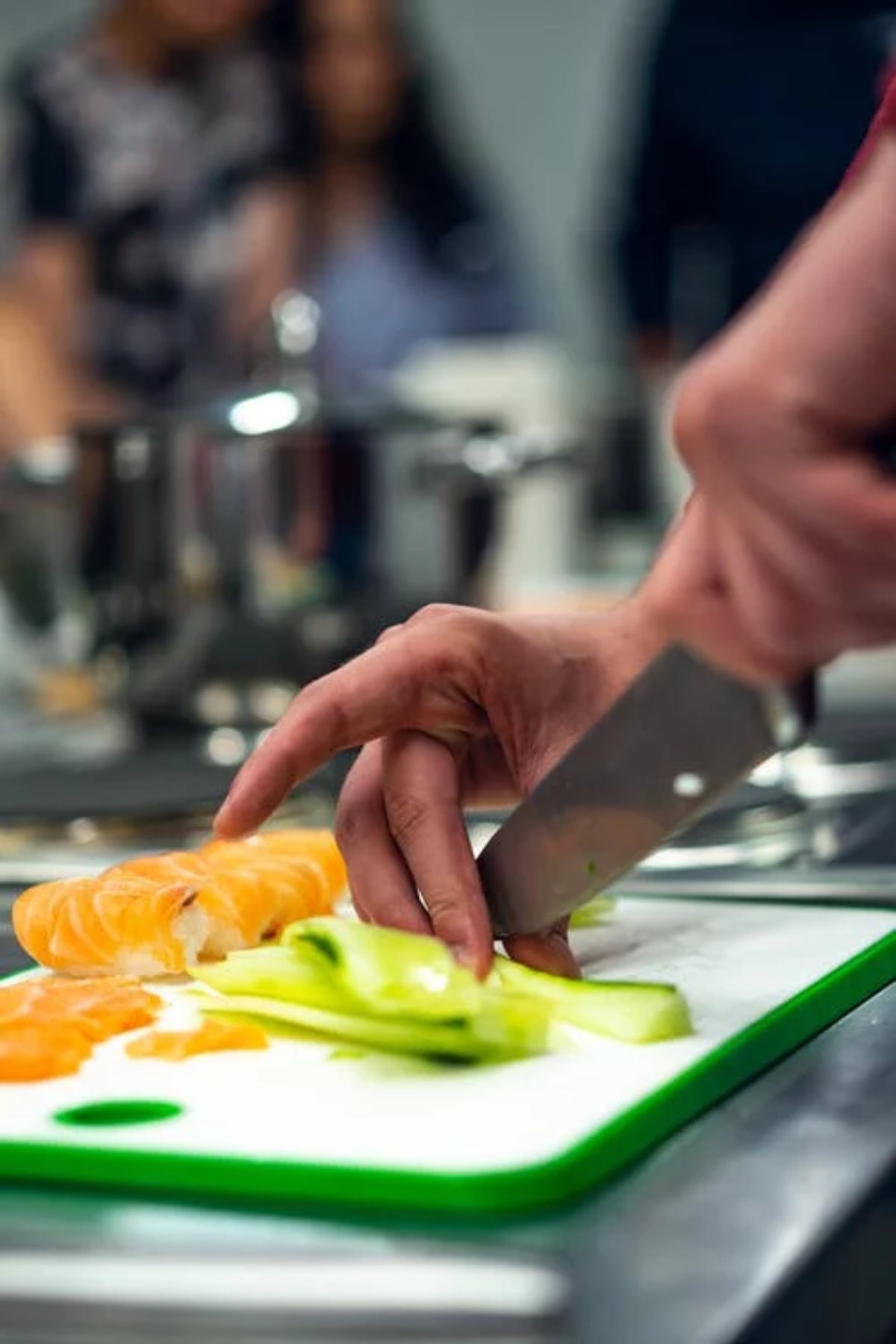what must food handlers do when handling ready to eat food
As soon as they become soiled or torn. Cover the wound with an impermeable cover and limit contact with food.

Cooking Times And Temperatures
A cook wore singe use gloves while forming raw ground beef into patties.

. Apply ointment and bandage the wound with an impermeable cover. What must a food handler with an infected hand wound do to work safely with food. Wash your hands with soapy water and.
A food handler prepping a salad stops to scratch an itch on her arm and then returns to making the salad. Use disposable single-use gloves when preparing ready-to-eat foods. To work with food a food handler with an infected hand wound must.
Section 13 No Bare Hand Contact with Ready to Eat Food The food handler will know that touching ready-to-eat foods with bare hands is not allowed. A food worker must use utensils or single use gloves when working with ready-to-eat food. Cover the wound with an impermeable cover and wear a single-use glove.
Single-use gloves can help keep food safe by creating a barrier between hands and food. Make sure the food has not been time-temperature abused. Clean single-use disposable gloves.
Place a bandage on food d. Whats done to it is done. How much time is left to cool the chili to 41F 5 C.
Cover wound with an impermeable cover and wear a single use glove b. Gloves and other barriers do not replace handwashing. Food handlers can contaminate ready-to-eat food by.
What must food handlers do when handling ready-to-eat food. Always wash your hands before putting gloves on and when changing to a new pair. A food handlers hands can transfer pathogens from one food to another.
Heat the food to destroy the pathogens B. Practice these four steps to prevent foodborne. You should change gloves at the following times.
After handling raw meat fish or poultry and before handling ready-to-eat food. For example people who have not washed their hands after they used the restroom spread illnesses such as Hepatitis A and Norovirus. Forks tongs scoops and spatulas deli paper toothpicks.
Only purchase gloves approved for safe foodservice. Recondition the food D. Before beginning a different task.
At least 180 F 82 C A food handler has cooled a container of chili to 70F 21 C in 1 hour. Gloves should be worn when handling ready-to-eat food. Using the same gloves to work with raw meats and then to prepare a sandwich.
Food workers must use utensils such as tongs scoops deli papers or single-use gloves to keep from touching ready-to-eat foods. Do I need to utilize single-use gloves during handling of ready-to-eat food products. The cook continued to wear them while slicing hamburger buns.
The current Model Food Code released in 2017 states that food handlers should not touch ready-to-eat foods with their bare hands and that suitable utensils such as deli tissue spatulas tongs single-use gloves or dispensing equipment should be used. Wash hands and surfaces often. Apply hand sanitizer to wound.
Secure hair clips hair pins buttons on clothes jewellery bandages. All food handlers must know how to keep food safe to eat this includes having the necessary skills and knowledge in food safety and food hygiene and ensuring you dont contaminate food through illness or unhygienic practices. Take all practicable measures to prevent unnecessary contact with ready-to-eat food.
Good hand washing is still required even when using utensils or gloves to handle food. Throw it out C. Dirty hands will contaminate food and make the food unsafe to eat.
The exceptions include when washing produce or when handling ready-to-eat ingredients for a dish that will. Never wash and reuse gloves. Four Steps to Handling and Preparing Food Safely.
Pushing older food to the back of the shelf in order to fit newer food at the front of the shelf. Restrain hair and tie back long hair. Never handle ready-to-eat foods with bare hands.
Food employees can handle ready-to-eat food without touching it with bare hands by using any of the following utensils or tools to create a barrier between hands and RTE foods. Food handlers must use single-use gloves while handling ready-to-eat foods unless the establishment maintains a written Alternative Operational Procedure. For example tongs should be used to put sliced vegetables into salads and scoops should be used to get ice out of an ice bin.
Single use gloves should be used when handling ready-to-eat food. What should be done with food that has been handled by a food handler who has been restricted or excluded from the operation due to illness. State law requires that food handlers properly wash their hands in order to prevent contamination of food.
Wash hands and bandage the wound with an impermeable cover. To avoid cross-contamination wash hands properly and thoroughly before putting on gloves and when changing to a new pair See Practicing Good Hand Hygiene for Food Workers fact sheet. When washing produce or when handling ready-to-eat ingredients for a dish that will be cooked to a correct internal temperature.
Food handlers working with ready-to-eat foods should take extra precautions because there is not a kill step of cooking with these foods to lower bacterial cell counts which lowers the risk of someone becoming sick. Avoid working w raw food until the wound is completely dry c. Placing containers of food on shelves at least 6 inches above the floor.
What temperature must a high-temperature dishwashers final sanitizing rinse be. Wear gloves when handling or preparing ready-to-eat foods. A fresh pair of gloves must be put on after each time a food handler uses the rest room whenever gloves have been used to touch items other than food after touching raw to be cooked foods or.

Keep Your Phone Away From Food

What Is Bare Hand Contact And How Do You Avoid It Texas Food Handler Safety

Food Employee Illness Training

Minimum Internal Cooking Temperatures During Covid 19 For Food Handlers Ace Food Handler

Stand Up Training Cross Contamination

How Food Handlers Can Contaminate Food

Food Safety Poster In 2022 Food Safety Posters Kitchen Safety Safety Posters

10 Principles Of Food Handling And Hygiene As Practised At Annamrita Principles Of Food Handling Food Safety Food Safety Training Food Safety And Sanitation

Food Safety Poster Personal Hygiene Food Safety Posters Kitchen Safety Food Safety Tips

Great Information On How To Wear Gloves Correctly They Are Not Magic Remember Food Safety Posters Kitchen Safety Food Safety Tips

When Must A Food Handler Wash Their Hands Food Safety

Food Safety Ways To Prevent Norovirus In Your Kitchen Gordon Food Service

Food Handler Health And Hygiene

Food Safety Posters Food Safety And Sanitation Food Safety Tips Food Safety Posters



